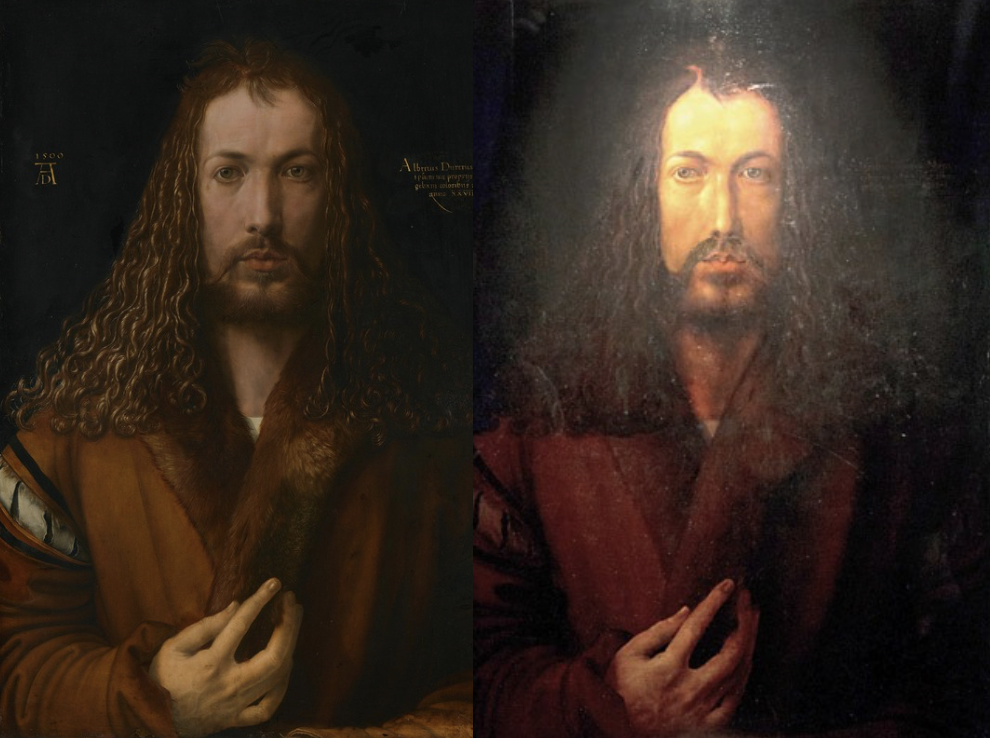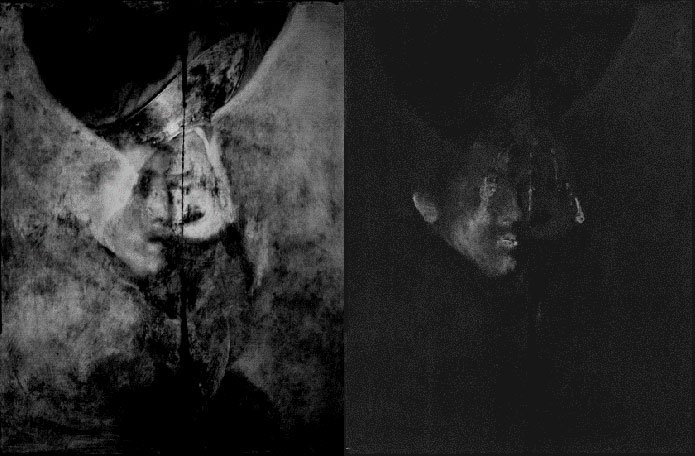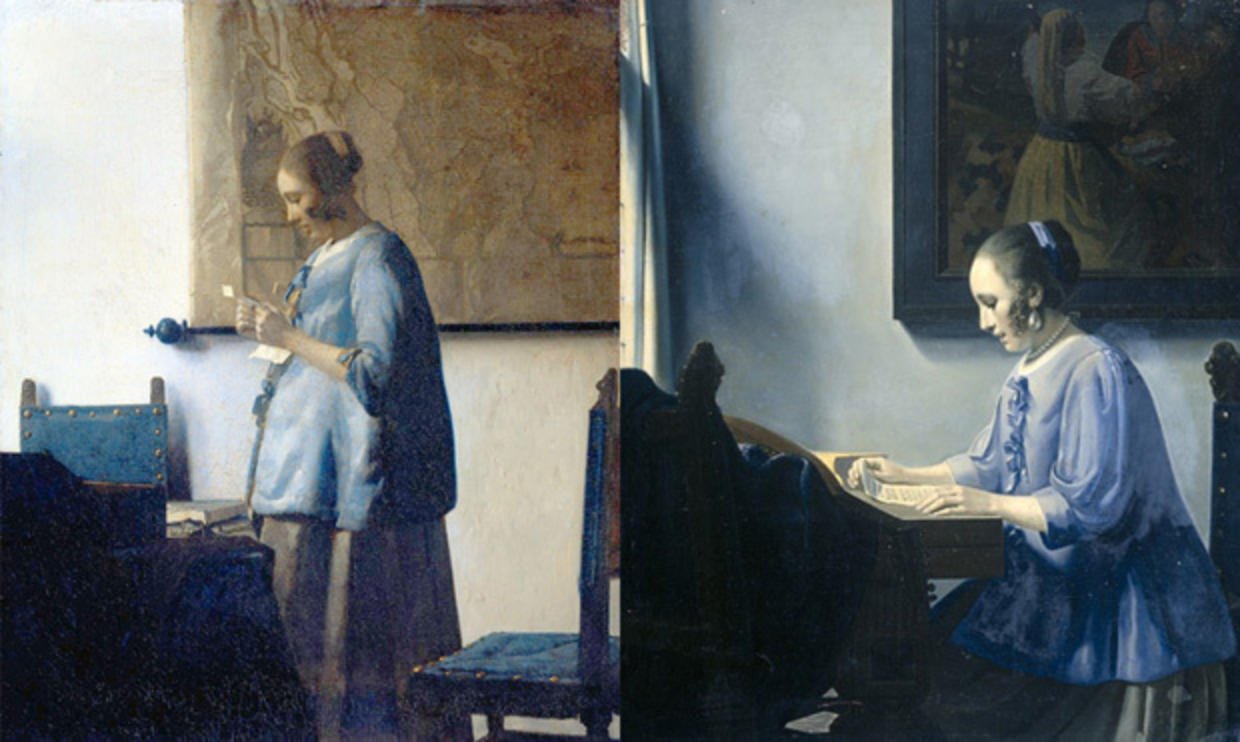The Implications of Art Forgery
Left: Albrecht Dürer, Self-portrait, 1500. Oil on lime. Right: Forged Self-portrait of Albrecht Dürer, pre. 1786. Images from Wikimedia Commons.
Art forgery involves creating and selling works of art that are falsely attributed to famous artists. This deceptive practice has profound implications for the art market, legal frameworks, cultural heritage, and scholarly research. This paper examines the dynamics of art forgery, analyzing its impact through various case studies and discussing the legal, ethical, and economic ramifications.
Defining Art Forgery
Art forgery involves creating and marketing artworks with falsely attributed origins to mislead buyers about their authenticity. This deception may encompass the entire artwork or just modifications to existing works.
There are mainly three types of forgers:
The creator of the fraudulent artwork.
An individual who finds an artwork and misrepresents its origin or value.
A person who, aware that an artwork is a forgery, attempts to sell it as genuine.
While replicas, reproductions, and studies can be legitimate, the line between these and forgery is subtle and context-dependent. For instance, copying a master’s painting or their techniques for educational purposes does not constitute forgery. However, the act crosses into forgery when the original artist’s signature is falsely applied to the copy.
The primary motivation for art forgery is often financial gain, though other factors like revenge, the pursuit of recognition, or critiquing the art market also play significant roles. Many forgers start as emerging artists who fail to achieve success in the competitive art market. In response to these challenges, they may turn to the forgery of works by well-established artists as a means to capitalize on the established reputations and financial value of those artists' works. This shift from original creation to deceptive replication underscores a critical and problematic aspect of the art industry, where recognition and market success may be as influential as artistic talent.
Historical Context
The history of art forgery is as rich and intricate as the artworks themselves, spanning over two millennia. The practice initially appeared during the ancient times when Roman sculptors produced copies of Greek statues. While these were accepted replicas rather than deceptive forgeries, the distinction between the two was often blurred, as contemporary buyers were generally aware they were purchasing reproductions. During the classical period, the focus was more on the artwork itself rather than the creator, with art primarily serving as historical documentation, religious inspiration, or visual enjoyment.
This dynamic began to shift dramatically with the Italian Renaissance, a pivotal era that marked the first recorded instances of what would be recognized today as art forgery. The Renaissance was characterized by a master-apprentice system where novices learned their craft by imitating the works and styles of established artists. These copies, often sold by the masters themselves, were originally seen as tributes rather than forgeries. However, as the value of art began to be associated more with the artist than the artwork—fueled by the burgeoning art market and the bourgeois class’s growing demand for art—authenticity became paramount. This led to the necessity for artists to mark their works, a practice that evolved into the signing of artworks. The burgeoning market and limited supply led to the emergence of fraudulent marks and signatures.
The discovery of Roman statues in late 14th-century Italy fueled an already growing interest in antiquities, further amplifying the value of art tied to recognized names. The 16th century saw artists like Albrecht Dürer marking their prints to deter forgers and imitators, underscoring the growing importance of the artist's identity in art valuation. Notably, even acclaimed artists like Michelangelo engaged in forgery; his creation of a counterfeit ancient statue entitled ‘Sleeping Eros’ represents one of the more audacious episodes in art forgery history. This period set the stage for the complex interplay of art creation, forgery, and commercialization that would define subsequent centuries in both Western and non-Western contexts, with varying cultural perceptions of the legitimacy and acceptability of reproductions and forgeries.
Economic Impact
Art forgeries can have significant economic impacts on the art market, affecting collectors, dealers, and the broader economic landscape. The introduction of forged artworks into the market can lead to a depreciation in the value of authentic works by undermining trust. When collectors become aware of the prevalence of forgeries, they may become hesitant to purchase artworks for fear of acquiring a counterfeit, thus reducing overall market activity and liquidity. This hesitancy can stifle the primary and secondary art markets, leading to reduced sales and potentially impacting the livelihoods of artists and legitimate dealers. Moreover, significant resources must be allocated to the authentication of artworks, involving experts and sometimes costly technological methods, which can increase transaction costs and slow market dynamics.
The economic consequences extend beyond market dynamics to affect cultural institutions and investment sectors. Museums and galleries, key players in the cultural economy, may suffer reputational damage if found to have inadvertently displayed forgeries, potentially affecting visitor numbers and sponsorship deals. For investors, art has become a significant alternative asset class, and the presence of forgeries can make this market segment particularly volatile. The uncertainty introduced by forgeries can lead to increased risk premiums and deter new investments, affecting the overall stability and growth of art as an investment vehicle. Therefore, the impact of art forgeries is deeply interwoven with economic confidence in the art market, influencing both the cultural and investment dimensions of the industry.
Cultural and Scholarly Impact
The cultural and scholarly impacts of art forgeries are profound, affecting the integrity of artistic heritage and the accuracy of historical knowledge. Forgeries can distort the understanding of an artist’s oeuvre, leading to misinterpretations of their style, technique, and evolution. When forgeries are mistakenly accepted into an artist's recognized body of work, they can mislead researchers, art historians, and educators, perpetuating inaccuracies in academic publications, exhibitions, and lectures. This not only misinforms the public and specialists but also skews the historical record, complicating efforts to understand the cultural context and artistic movements of certain periods.
Moreover, forgeries challenge the authenticity and provenance of artworks, which are central to cultural heritage institutions such as museums. When forgeries infiltrate museum collections, they undermine trust in these institutions' roles as custodians of cultural history. The presence of forged pieces in exhibitions can lead to public skepticism regarding the authenticity of other artworks, diminishing the cultural value and educational potential of collections. In response, significant resources are diverted to the verification and re-verification of artworks, straining budgets and shifting focus away from educational and preservation activities. Overall, art forgeries erode the cultural authority of heritage institutions and complicate the scholarly pursuit of art historical truth, affecting how cultures perceive and value their artistic legacies.
Authentication Techniques
The detection and authentication of art forgeries involve intricate examination and forensic techniques to assess the authenticity of artworks. Simple visual inspections can sometimes reveal forgeries when elements of different works are amalgamated to create a "new" piece, or when anachronistic features are integrated into the work. Skilled forgers may employ methods to artificially age artworks, such as using chemicals or physically inducing signs of aging like wormholes.
A fundamental method in authentication is Morellian Analysis, which scrutinizes the techniques and materials used in the artwork. This might include the examination of brushwork, the use of pigments not available during the supposed time period of creation, or the application of modern methods inconsistent with the artist's known practices. X-ray and infrared examinations can reveal underlying images or details that suggest modifications or hidden layers, which are common in re-used canvasses but suspicious when the visible artwork claims historical origins inconsistent with the findings.
Rembrant, An Old Man in Military Costume, 1630-31. On the Left shows the single-element distribution maps for lead corresponding to the pigment lead white. On the right shows mercury corresponding to the pigment vermillion. Images from https://colourlex.com/project/x-ray-fluorescence/.
Technological advances have significantly enhanced the forensic capabilities in art authentication. Techniques such as X-ray fluorescence can analyze the composition of materials to determine if they align with the era of the artwork. Similarly, carbon dating and thermoluminescence can provide chronological evidence about the age of materials used in art. More contemporary methods include digital image analysis, which employs statistical analysis and wavelet decomposition to detect inconsistencies in texture and composition that may suggest a work is not by the hand claimed.
However, despite these advanced techniques, challenges remain. The authentication process can be fraught with errors due to the subjective nature of interpreting historical data and art styles. Additionally, forgeries can be so adept that they fool even seasoned experts. High-profile cases, such as those involving Han van Meegeren’s Vermeer forgeries, highlight the potential for even scientifically vetted artworks to later be revealed as frauds. Therefore, continuous refinement of authentication techniques and collaborative efforts across disciplines are crucial in the ongoing battle against art forgery.
Legal Frameworks
In the United Kingdom, the legal remedies available to purchasers of forged artwork are dependent on the context of the acquisition. For instance, buying at an auction may offer contractual guarantees allowing for reimbursement if the art is returned within a specific period, thanks to protections under the Sale of Goods Act 1979 and the Consumer Rights Act 2015. These statutes imply warranties like fitness for purpose, reinforcing consumer protection. However, the detection of forgeries is challenged by limited authentication resources, economic pressures against outing forgeries, and high burdens of proof for criminal prosecution. Additionally, the international art market's varied legal landscapes further complicate the enforcement of laws against forgery.
In the United States, both civil and criminal legal frameworks are utilized to tackle art forgery. Criminal actions can be taken under federal laws like the Racketeer Influenced and Corrupt Organizations Act (RICO), as well as wire and mail fraud statutes, although such prosecutions are not common due to the stringent requirement of evidence and other competing priorities. On the civil side, the Federal Trade Commission has addressed unfair practices under the FTC Act, as seen in cases against sellers of counterfeit prints.
Overall, the UK and US legal approaches to art forgery highlight a mixture of consumer protection and the complexities of enforcing laws in this nuanced field. While protections exist to aid buyers against forgeries, the challenges of detection and prosecution—amplified by international legal inconsistencies—suggest a need for ongoing scrutiny and potential reinforcement of existing legal mechanisms to better curb the proliferation of art forgeries.
Han van Meegeren - The Famous Forger
Henricus Antonius "Han" van Meegeren was a Dutch painter and portraitist born on October 10, 1889, in Deventer, Netherlands. Initially aspiring to be a recognized artist, Van Meegeren's early work received harsh criticism from art critics, which led him to pursue a clandestine career in art forgery. He is regarded as one of the most skilled art forgers of the 20th century, famously deceiving buyers into believing they were purchasing veritable works from the Dutch Golden Age, including prominent figures such as Hermann Göring, the Nazi Reichsmarschall.
Left: Johannes Vermeer, Woman in Blue Reading a Letter, c. 1663. Right: Han van Meegeren, Woman Reading, 1935-36. Image from https://www.cbsnews.com/pictures/art-forgeries/2/.
Van Meegeren’s method involved meticulous research and craftsmanship to mimic the styles of revered Dutch artists like Johannes Vermeer. He procured authentic materials from the 17th century, including canvases and pigments, and innovated a complex aging process that involved baking the finished paintings to induce craquelure, a network of fine cracks associated with old paintings. This process helped his works pass as genuine, fooling even the leading art experts of his time. Van Meegeren's masterpiece forgery, "The Supper at Emmaus," created in 1937, was authenticated by the renowned art historian Dr. Abraham Bredius, who praised it as a genuine Vermeer.
World War II brought Van Meegeren’s activities into sharper focus when it was revealed that he had sold a forged painting to Göring. After the war, he was arrested in 1945, not for forgery initially but for collaborating with the Nazis by selling Dutch cultural heritage. To reduce his sentence, Van Meegeren confessed to forgery, an act that transformed him from a national traitor to a folk hero in the eyes of the Dutch public. He argued that he had tricked the Nazis and thus avenged the occupation in a uniquely ironic manner.
At his trial, which began in October 1947, Van Meegeren’s methods were thoroughly scrutinized, revealing the extent of his deception. He was eventually convicted of forgery and fraud but was sentenced to only one year in prison, a sentence he did not complete due to his death from heart failure on December 30, 1947.
Despite his notorious career, Van Meegeren’s story continues to fascinate and has had a lasting impact on the art world, raising questions about authenticity and the value of art. His forgeries have become collectibles in their own right, often fetching higher prices at auctions than genuine works of some of the artists he imitated. This paradox underscores the complex interplay between artistry, authenticity, and value, illustrating how the stories behind the artworks can sometimes be as valuable as the artworks themselves.
Conclusion
In conclusion, art forgery poses significant challenges and implications across the art market, legal frameworks, and cultural heritage. By examining the motivations behind forgeries and their historical context, this paper has highlighted the complex dynamics between economic gain, artist recognition, and the authenticity of cultural artifacts. The economic ramifications of forgery extend from market destabilization to impacts on cultural institutions, affecting both consumer confidence and investment. Culturally, forgeries distort historical narratives and challenge the integrity of scholarly research. Legally, despite existing frameworks designed to combat art forgery, ongoing issues with enforcement and international inconsistency remain. Therefore, a multi-faceted approach involving enhanced authentication techniques, stricter legal regulations, and increased awareness among collectors and institutions is essential to mitigate the effects of art forgery and preserve the integrity of artistic heritage.



